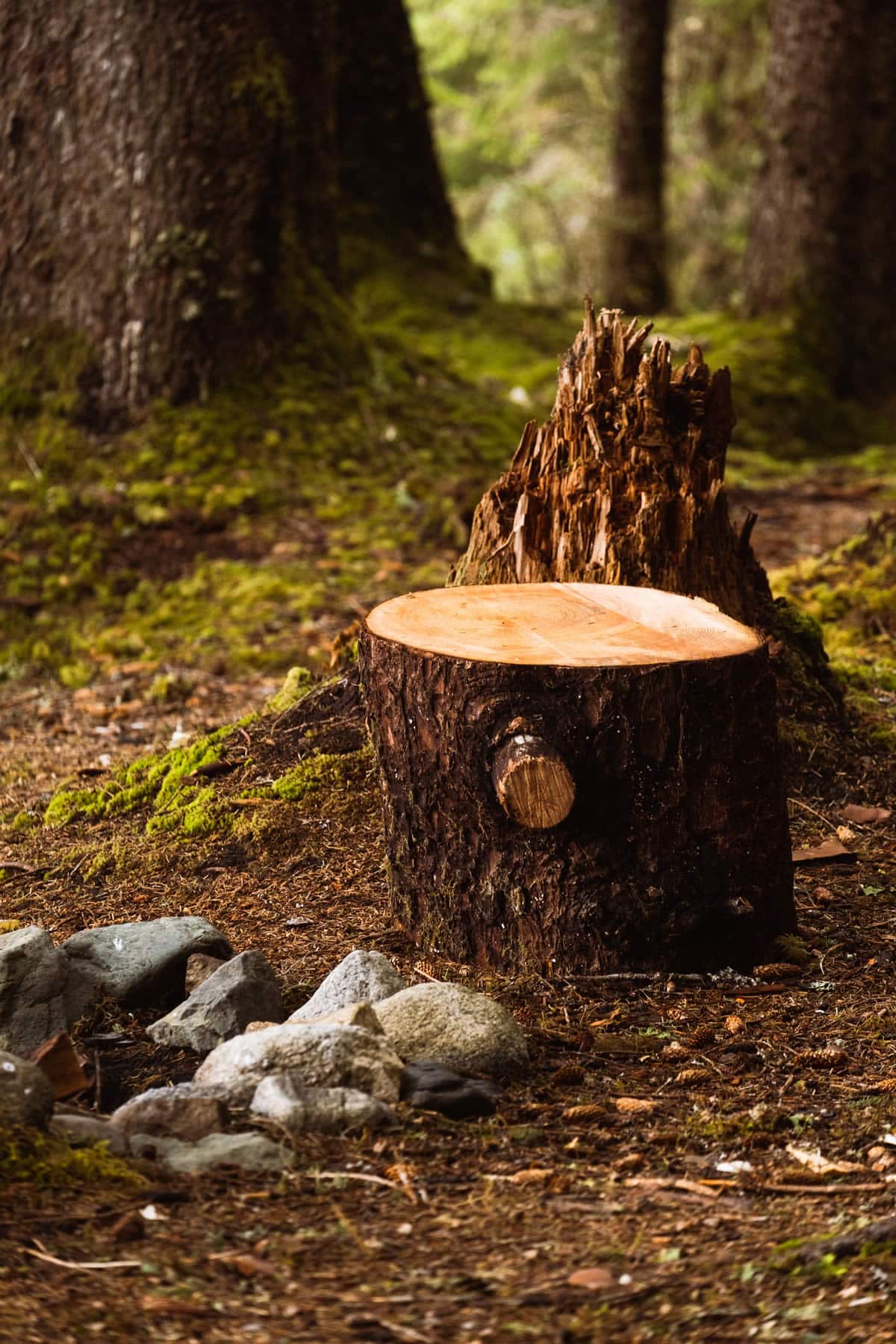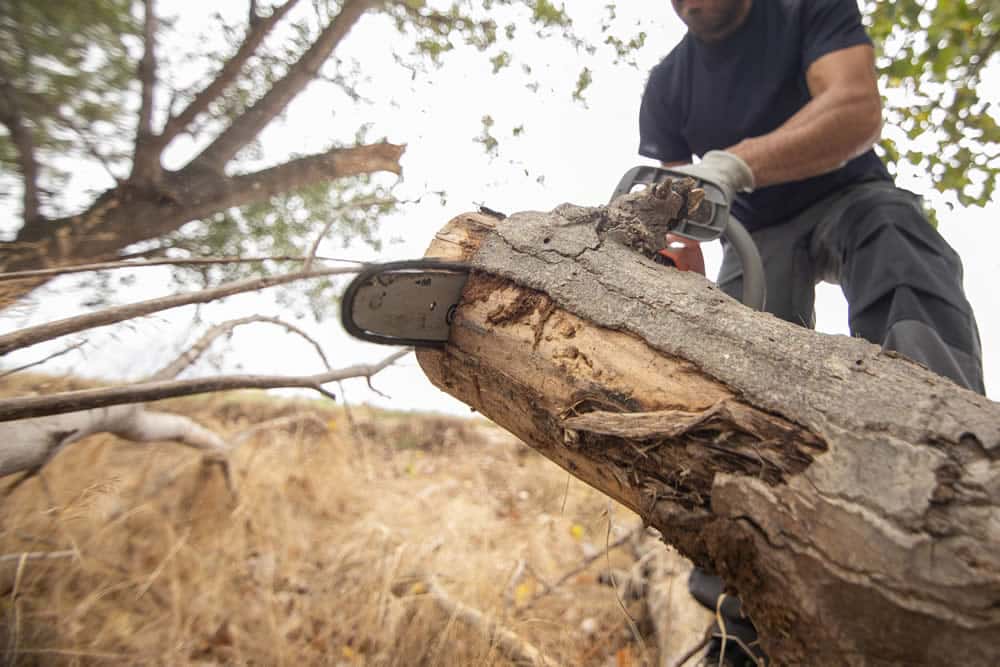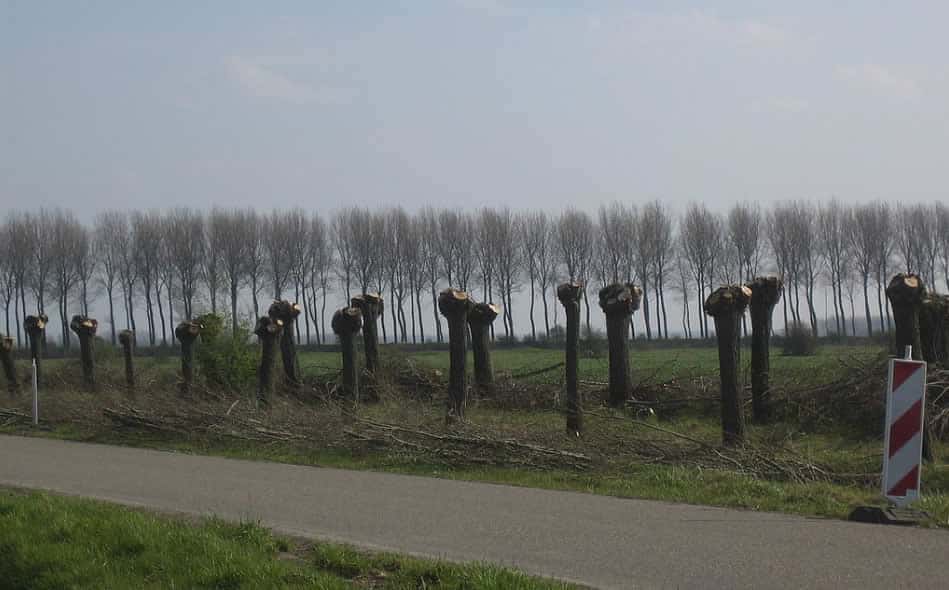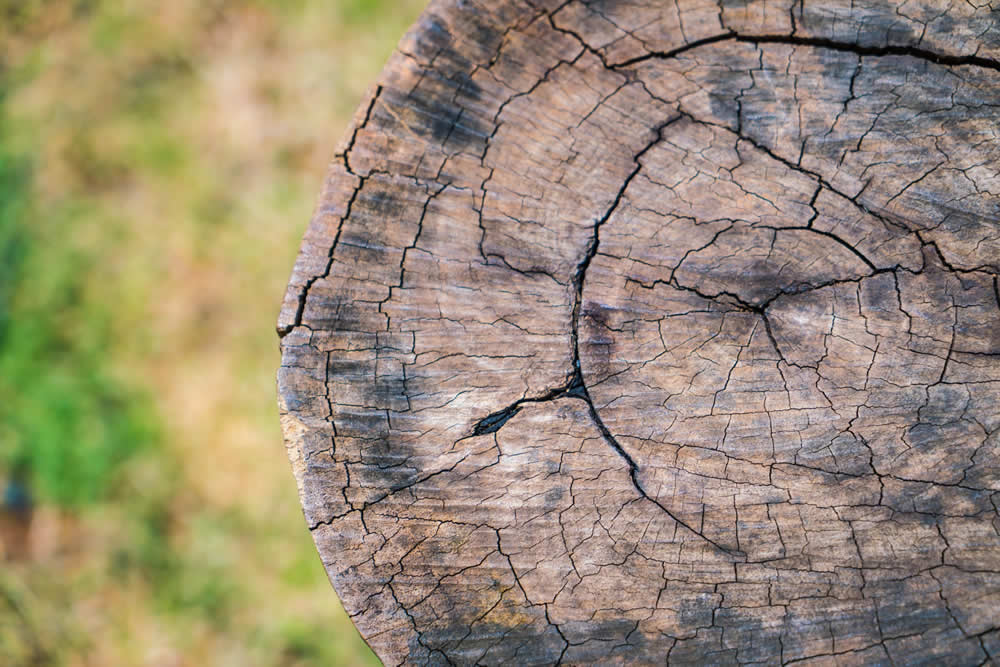If you’ve recently done some landscaping or had a tree removed from your property, you may find yourself with an unsightly reminder of the former greenery: a stump. Tree stumps are more than just a blemish on your landscape; they can also pose safety hazards, take up precious space, and host unwanted pests. Fortunately, with a few tools and a bit of effort, you can rid your yard of these remnants and reclaim your green space.
Removing a tree stump can vastly improve the aesthetics and functionality of your outdoor area. Beyond the cosmetic benefits, you’ll ensure that new plantings have enough space to thrive, eliminate potential sources of illness for nearby trees, and restore a harmonious look to your landscape.
How to Kill a Tree Stump
There are a few ways to kill a tree stump, depending on your preference for speed, effort, and budget. Here are a couple of common methods:
Slow and Steady:
- Epsom Salt: This natural method uses magnesium sulfate (Epsom salt) to dehydrate the stump. Drill holes in the stump and fill them with Epsom salt, then cover the entire stump with a tarp to block sunlight and moisture. This can take a few months, but it’s safe for the surrounding soil.
Faster Methods:
- Herbicide: Apply herbicide directly to the stump using a paintbrush. Choose a herbicide labelled for killing trees and stumps, following the instructions carefully. This method is quicker than Epsom salt, but requires caution as herbicides can harm nearby plants.
Other Options:
- Grinding: A tree stump grinder can remove the stump entirely, leaving behind chips that can be used for mulch. This is the fastest option, but it requires renting or purchasing a grinder, which can be expensive.
- Burning: This method is not recommended in many areas due to fire risks and air pollution.
Here are some additional things to consider:
- The size of the stump: Larger stumps may take longer to kill with any method.
- The type of tree: Some trees are more persistent than others.
- Local regulations: Check for any restrictions on using herbicides in your area.
Tree Stump Materials Needed
Before you begin, gather the following tools and materials:
- A shovel
- Hand pruners
- Loppers or a small saw
- A digging bar or a mattock
- Safety goggles
- Work gloves
- A chainsaw (depending on stump size)
- A pickaxe
- A winch (optional, for tough stumps)
- A truck or ATV with towing capability (for winch)
Tree Stump Step-by-Step Instructions
Here’s a detailed walk-through of the tree stump removal process:
Assess the Stump
Examine the stump to determine its size and assess the extent of root growth. Consider the space around the stump — will it allow for the use of certain tools or methods?
Size and Surface Roots
Measure the diameter of the stump and observe any surface roots that might need to be addressed separately.
Surrounding Area
Consider the stump’s proximity to other plants or structures. You want to remove the stump without causing collateral damage.
Dig Around the Stump
Start by using a shovel to dig a trench around the perimeter of the stump. The trench should be at least a foot away from the stump and as deep as possible, preferably exposing the roots.
Cutting the Roots
Once the trench is deep enough, start cutting the exposed roots with the hand pruners or a small saw. This will handle the smaller roots and make your later efforts more manageable.
Undercutting the Stump
If possible, undercut the stump by cutting at the base from below. This will help weaken the stump’s grip on the soil.
Sever Larger Roots
For larger roots that you couldn’t get to with the pruners or saw, use a chainsaw to cut through them. Be cautious and work methodically to avoid injury.
Nature of the Roots
In cutting these larger roots, take note of the direction they grow. Some may come straight out from the stump, while others could be deeper or longer.
Safety Considerations
Wear hearing protection when using the chainsaw, and follow safety guidelines to avoid accidents.
Remove the Stump
With the digging bar or mattock, start breaking up the soil and cutting the smaller roots further. This will help loosen the stump from the earth.
Leveraging the Stump
Use the pickaxe or a pry bar to leverage the stump out of the ground. If it’s still too firmly rooted, consider using a winch attached to the stump or the trunk of a tree.
Vehicle Towing
If using a winch, secure it to a truck or ATV with a chain or strap. Slowly, use the vehicle to apply the necessary force to remove the stump.
Fill the Hole
Once the stump is removed, fill the hole with sawdust, dirt, or another appropriate filling material. Stamp it down to prevent it from settling over time.
Hole Depth and Size
Ensure that the hole is filled to the correct depth and that the filling material is tightly packed to avoid any depressions in the ground.
Tree Stump Alternative Methods
If the manual approach feels too daunting or the stump is in a particularly inconvenient spot, consider these alternative methods:
Chemical Solutions
There are several chemical stump removal products available that use potassium nitrate to soften the stump over time. This method is effective but requires patience, as it could take months to fully break down the stump.
Burning the Stump
While the most labour-intensive approach, burning a stump is effective, create a large fire over the stump and keep it burning for several hours, adding wood as necessary. Once the fire is out and the stump has smouldered, remove the remains and fill them with soil.
Stump Grinder
A stump grinder is the most efficient but also the most expensive alternative. Grinders can be rented, but they require knowledge and caution to operate.
Safety Precautions
Personal safety is paramount when removing a tree stump. Always wear appropriate gear, and familiarize yourself with the tools and techniques before starting.
Protective Gear
At a minimum, you need sturdy work boots, gloves, and safety goggles. When using power tools, also wear hearing protection and chainsaw chaps.
Tool Safety
Keep all cutting tools sharp, and never use a chainsaw without proper training or precautions. Always cut at a distance from yourself and others.
Tips and Tricks
For a smoother stump removal process, keep these tips in mind:
Work Slowly and Methodically
Rushing through the process can lead to mistakes or accidents. Take your time and plan each step carefully.
Choose the Right Tools
Having the right tools will make the work much easier. If you’re unsure, consult a hardware store or rental shop for recommendations.
Plan for Waste Removal
Consider how you’ll dispose of the stump once it’s removed. Will you need to rent a chipper to shred the wood, or does your waste management service handle tree debris?
Removing a tree stump is a satisfying way to improve the look and safety of your property. By carefully following the steps outlined above, you can successfully complete this DIY project and enjoy a more expansive and attractive outdoor area. Remember to approach the task with caution, and don’t hesitate to seek professional assistance if you encounter challenges beyond your comfort level.
How to Physically Remove a Tree Stump
Once you have successfully killed your tree stump, the natural material will start to break down on its own. By following the steps mentioned above, you can typically remove the tree stump without any special equipment or disposal methods.
However, if you prefer to take care of the stump removal yourself, you can do so without waiting for the natural degradation process to take place, but it will require more effort. To remove a tree stump quickly, you can use the following methods instead of waiting for months for the stump to decompose.
What Not to Use for Tree Stump Removal
It’s possible that you’ve received bad advice on how to remove a tree stump from other homeowners you’ve spoken to. While some of these techniques may be popular, we do not recommend using them.
Bleach: Applying enough bleach to a tree stump will cause it to die. However, it will also kill any nearby grass or plants and potentially contaminate the local water supply. To remove a stump, it’s better to use a natural solution like Epsom salt to protect your lawn and be environmentally conscious.
Burning: If you live in a dry area and you burn your stump, you run the risk of starting a wildfire. Before lighting a fire, make sure you have permission from the fire department in your community.
Diesel Fuel: Diesel fuel is less effective than kerosene at killing tree stumps because it burns more quickly. In addition, diesel is more harmful to the environment and surrounding plants than kerosene.







